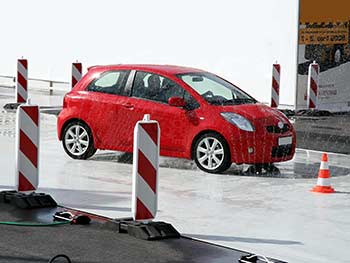
High-tech improvements to the National Highway Traffic Safety Administration’s (NHTSA) 5-Star Safety Ratings for new vehicles are on the way. The changes are supposed to give all of us better information we can use when buying a new car. One of the stated goals of publishing such information is to encourage manufacturers to continue creating vehicles with superior crash protection, thereby saving lives.
Fresh Enhancements to the Old System
The US Department of Transportation announced the alterations to the safety ratings in December of 2015, saying that the enhancements would include:
- New crash test dummies employing more human characteristics that will provide better data on how crashes affect our bodies.
- A new test that measures how well a vehicle’s occupants are protected in frontal oblique (angled) crashes.
- Improved full frontal barrier crash tests with the purpose of improving safety for rear-seat occupants.
- New tests that evaluate how well pedestrians are protected from injuries when they are struck by a vehicle.
- New ratings of crash-avoidance systems and of other advanced motor vehicle technologies.
- The introduction of half-star increments that will give consumers more detailed information about a vehicle’s safety performance.
- Ways to update the 5-Star Safety Ratings program more quickly as new technological improvements impacting safety appear in vehicles.
The 5-Star Safety Ratings system currently in place provides assessments of from 1 to 5 stars regarding a vehicle’s ability to protect its occupants in front, side, and rollover crashes. This may not seem like much next to the well-known Insurance Institute for Highway Safety’s (IIHS) crash tests, which also include frontal offset crash reviews, tests of head restraints, and tests of crash-avoidance systems.
Commenting for the media, U.S. Transportation Secretary Anthony Foxx said, “NHTSA’s 5-Star Safety Ratings have set the bar on safety since it began in 1978, and today we are raising that bar. The changes provide more and better information to new-vehicle shoppers that will help accelerate the technology innovations that saves lives.”
A New Recommended Automotive Technology
In a related matter, in January, 2016, the NHTSA decided to include automatic braking on its list of recommended technologies. This list appears alongside the 5-Star Safety Ratings on a new car’s window sticker, but does not affect the star ratings. Automatic braking joins such recommended technologies as forward collision warning, lane drifting warning, and rearview cameras.
We’re listening. How can we help?
The aftermath of a vehicle collision can be life-changing for the accident victims and their family, and often takes years of patience and dedication to overcome. If you believe another party or parties are responsible for the injuries or losses you have suffered in a Maryland car crash, Steve Heisler can help you get your life back on track. Steve has focused exclusively on personal injury law for nearly 20 years, always working hard to ensure that accident victims receive the compensation they deserve to help pay off medical bills, physical therapy and other rehabilitative care, lost wages, vehicle repair or replacement, and other accident-related costs.
Contact the Law Offices of Steven H. Heisler today. We can help you obtain compensation for injuries you or your family member sustained. Call (410) 625-4878 for a free consultation, or use our online form.
